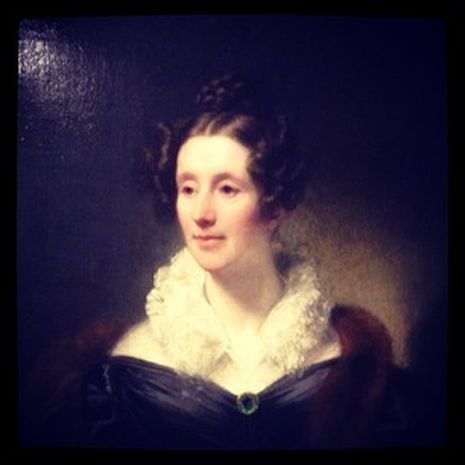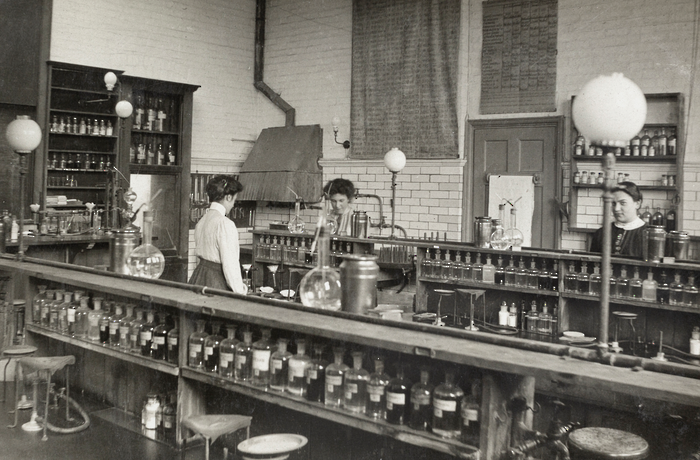The Three Marys: The women who unlocked Earth, space and life
Rory Cockshaw examines the work and legacies of three women linked by both their name and their pioneering contributions to science

Cambridge is the home of science. Or, at the very least, Cambridge is a home of science. Science is not one of these concrete concepts whose origins you can pin down to a particular place at a particular time, but as a city it has a disproportionately strong claim to being the motherland of scientific enquiry. In fact, William Whewell, a Trinity man, priest and polymath, coined the term ‘scientist’ in Cambridge in 1833 to displace the more cumbersome terms ‘man of science’ or ‘natural philosopher’, thus rendering Cambridge the veritable birthplace of ‘scientists’.
He may have also coined the term because the person about whom he was speaking was not in fact a ‘man of science’. No; she was the Scottish once-in-a-generation-genius and “one of only six people in England to understand Laplace”: Mary Somerville. She studied shells and rocks; taught herself Latin and algebra at a young age; studied Euclid by candlelight; was, with Caroline Herschel, the first woman to be admitted to the Royal Society of Astronomy; wrote the first textbook on British physical geography; and in her works on the physical sciences laid down the theoretical groundwork for the later discovery of Neptune via a mathematical analysis of its perturbations on the orbit of Uranus. This latter work, On the Connexion of the Physical Sciences, was the most widely sold scientific work until Darwin’s On the Origin of the Species, some 25 years later. She was invited to dine at Cambridge and had Somerville College, Oxford, named for her posthumously.
Now you might think that’s quite the CV (and, rest assured, I’ve left plenty out), but Somerville had little in the way of formal education. She lived from 1780 to 1872, in a society that made it virtually impossible for women to reach such heights of scientific recognition - she seemed to recognise this and was displeased, publishing pseudonymous works of mathematics and physics only as ‘A Lady’.
But because of her voracious appetite for book-learning, her quick, inquiring mind, and her decades-long dedication to science for little personal gain, she forced men like Charles Lyell, John Stuart Mill and William Whewell to recognise her prodigious talent - as the first scientist. Yet despite her plethora of achievements, as Taylor Swift may be wont to point out, would she have gotten there quicker if she were a man?
Somerville was not the only woman to show promise in the scientific arena of 19th century Britain, however. Mary Anning’s name came dangerously close to extinction - the very concept her discoveries helped establish. Anning was a working-class native of Lyme Regis, Dorset, and sold fossils, or ‘curies’, from a table outside her struggling family’s ramshackle home. Mary and her brother Joseph spotted the first known ichthyosaur, a Jurassic marine reptile with a violent, dragon-like face and teeth, the likes of which haven’t been seen in almost 70 million years.
Anning (1799-1847) was also the first person to uncover a complete plesiosaur skeleton in her beloved Lyme Regis rocks. And, a few years after that, the first outside Germany to uncover a pterodactyl (now ‘pterosaur’). She was the first to see a fossilised ink sac still attached inside a belemnite (an extinct relative of the squid and octopus), which her close friend and paleontological ally, Elizabeth Philpot, revivified in water and used that ink in which to, of all things, sketch more fossils. Philpot was 20 years Anning’s senior and significantly higher on the social ladder, but the two shared a love of fossils. Philpot was a much sought-after consultant on fossil fish and her extraordinary collection now lies in Oxford’s Museum of Natural History.
Anning also found a number of ‘curies’ that, when broken open, contained assorted fish bones and other fragments of evidently organic matter. She proposed to leading Oxford paleontologist and priest William Buckland that they were fossilised faeces - now ‘coprolites’ - which, unusually, she was fully credited for by Buckland in his paper on them. Buckland saved Anning’s career, too. After she was accused of fraud (by Georges Cuvier), he called an emergency meeting of geologists to affirm the credibility of Anning’s plesiosaur. Mary Anning did not simply have a good pair of eyes: she was a passionate, dedicated, physically strong and mentally resilient woman with a very powerful, intelligent, deductive mind to boot.
Mary found a number of other ichthyosaurs in her life, one of which is displayed in full in front of the complete plesiosaur in the Sedgwick Museum in Cambridge, and the skull of another lies off to the side in a floor display. It is deeply saddening to note that nowhere on the labelling of these fossils at the time does Anning’s name appear. It is as if paleontologists were trying their damnedest to keep her out of the history books.
Some were: Richard Owen, the founder of the Natural History Museum in London, who provided the scientific description of Anning’s plesiosaur, omitted any mention of her in his papers. Unlike Buckland, Owen (vastly unpopular in society, disparaged even by Darwin and Huxley) was a far more typical 19th century male that viewed the 19th century female as something of an afterthought, especially where science was concerned.
Owen rears his ugly head again in the story of another Mary, Mary Mantell (1795-1869), who discovered the first iguanodon’s tooth. Mantell, a more-than-competent paleontologist, uncovered the first known iguanodon tooth outside the house of one of her husband’s patients. Her discovery and the dynamic research partnership between herself and her husband - Gideon Mantell, a Sussex doctor and later paleontologist inspired by Mary Anning - led to excavation of more iguanodon bones under the same site, the products of which can be seen clearly in the entrance of the Sedgwick.
However, the Sedgwick Museum falls foul of the biases of history. In the display cabinet to the side of the iguanodon, Gideon is credited with discovering the first tooth, and no mention is made of Mary Mantell, her initial discovery, and her subsequent work in describing and drawing the specimens unearthed, and this is ultimately down to Richard Owen.
He attempted to discredit and plagiarise the work of the Mantells, putting such a strain on the relationship between the married couple and their financial situation that the only route out of destitution was to turn the family home into an open museum. Mary Mantell subsequently divorced Gideon, and Gideon ever after claimed the iguanodon as his own find. The first dinosaur was his.
Three Marys. Mary Somerville, a genius of the physical sciences whose work on physical geography was authoritative for many decades and set a precedent for the work of contemporary men, and whose work in planetary science predicted the prediction of Neptune.
Mary Anning, who for only the first nine years of her life (when she was too young) and the last nine years (when she was finally granted a pension by the scientific community) earned her living solely off the gritty end of the fossil business, yet also contributed innumerably many fossils and an impressive number of theories to paleontology, almost entirely devoid of credit and under suspicion of fraud.
And Mary Mantell, uncredited discoverer of the first dinosaur recognised as such, ignored in museum archives, but whose discovery opened up the doors to dinosaur paleontology.
These women unlocked Earth, space and life for the benefit of all but themselves. While the respect they had in life wavered between being widely lauded like Somerville, being used as a scientific instrument like Anning, or being written out almost entirely like Mantell, the respect we give them in death should be raucous and celebratory.
 News / Caius mourns its tree-mendous loss23 December 2025
News / Caius mourns its tree-mendous loss23 December 2025 News / Clare Hall spent over £500k opposing busway 24 December 2025
News / Clare Hall spent over £500k opposing busway 24 December 2025 Comment / Yes, I’m brown – but I have more important things to say22 December 2025
Comment / Yes, I’m brown – but I have more important things to say22 December 2025 Comment / The ‘class’ of Cambridge24 December 2025
Comment / The ‘class’ of Cambridge24 December 2025 Interviews / Politics, your own way: Tilly Middlehurst on speaking out21 December 2025
Interviews / Politics, your own way: Tilly Middlehurst on speaking out21 December 2025








